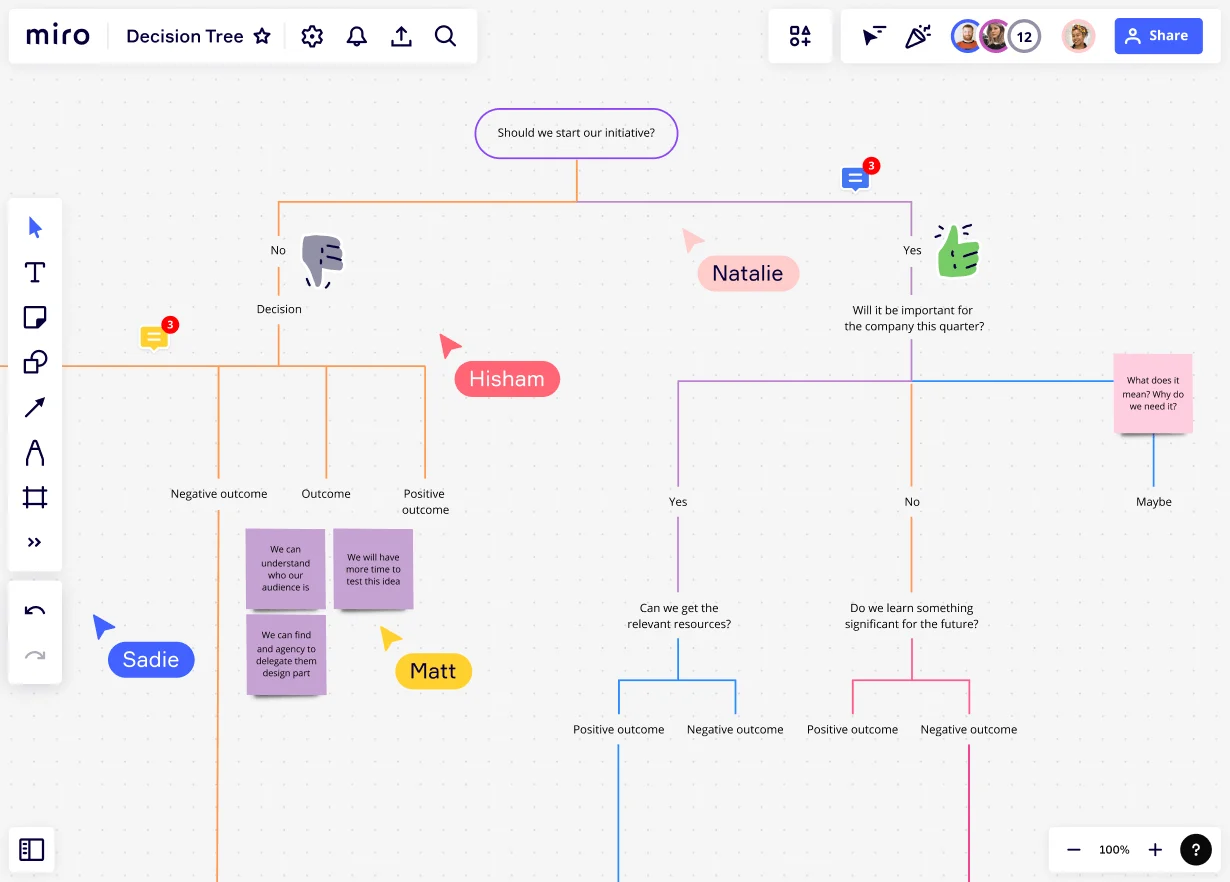
Table of contents
Table of contents
What is shared decision-making?

Summary
In this guide, you will learn:
- What Shared Decision-Making (SDM) is: a collaborative process where all team members contribute insights to strategic decisions, promoting inclusivity and engagement.
- The core principles of SDM: open communication, mutual trust, and a collective mindset that moves beyond traditional top-down decision-making.
- The typical SDM process steps: identifying decisions, gathering information, brainstorming options, evaluating alternatives, selecting a decision, implementing it, and reviewing outcomes.
- How SDM fosters a culture of equality and innovation by valuing diverse perspectives from all organizational levels.
- The importance of ensuring participants are well-informed and supported throughout the decision-making to avoid feelings of abandonment or uncertainty.
- How SDM can improve business outcomes by creating more inclusive, transparent, and effective decision-making practices.
What is Shared Decision-Making: A quick intro
Imagine a business environment where every team member, regardless of their position or department, plays a crucial role in making strategic decisions. This concept of equality and inclusivity in decision-making is known as Shared Decision Making (SDM).SDM is a process that transcends the traditional top-down decision-making model. It brings together people from all levels of an organization to contribute their insights, perspectives, and expertise to key decisions. By valuing everyone's input, SDM helps foster an inclusive, engaged, and innovative business culture.
Understanding how Shared Decision-Making works
At its core, Shared Decision-Making embraces the principles of open communication, mutual trust, and a collective mindset. A shared decision-making process follows a series of steps:
- Identification: It begins with identifying a critical business decision that needs to be made.
- Information gathering: Then, the process of collecting relevant information from various stakeholders, data sources, and even customers, if applicable, takes place.
- Brainstorming: Team members collaborate to brainstorm potential options or solutions.
- Evaluation: These options are evaluated based on their possible outcomes, potential risks, and alignment with business objectives.
- Decision selection: The team agrees on the best option either by voting or through a consensus-building process.
- Implementation: The selected decision is then executed.
- Post-implementation review: Finally, an evaluation is conducted to assess the effectiveness of the decision and learn from the process. Through this cycle, SDM ensures that every team member feels their voice is heard and actively included in shaping the organization's path forward.
Benefits of Shared Decision-Making
Shared Decision-Making has many advantages:
Enhanced creativity and innovation
Including diverse viewpoints often leads to more creative and innovative solutions. Different backgrounds and perspectives can offer new angles that may not be apparent in a homogeneous group.
Increased employee engagement
When employees feel their opinions are valued, they will likely be more engaged and committed to the organization. This increased engagement can boost productivity and overall morale.
Risk diversification
With a broader range of perspectives, organizations are better equipped to identify potential risks and opportunities that a single decision-maker might overlook.
Improved decision quality
The decision-making process can benefit from the collective knowledge and expertise of the group, leading to more informed and effective decisions.
Successful companies that use Shared Decision-Making
Several successful companies have embraced Shared Decision-Making to their advantage.
Google is renowned for its open culture that encourages employee participation. This is evident in their "20% time" policy, which allows engineers to spend 20% of their time on projects they think will benefit Google. This approach has led to successful projects such as Gmail and Google Adsense.
Patagonia, the outdoor clothing company, has been a long-standing advocate of shared decision-making. They have an inclusive workplace culture that encourages employees at all levels to share their ideas. This policy has fostered innovation and allowed Patagonia to stay competitive in a crowded market.
How to adopt Shared Decision-Making in your organization
Adopting Shared Decision-Making in your organization requires a shift in culture and mindset. Here are some steps to facilitate this process:
- Leadership Commitment Leaders must be committed to sharing power and decision-making responsibilities. This includes encouraging participation, valuing diverse opinions, and creating an environment where employees feel safe to share their ideas.
- Open Communication Establishing an open communication culture is crucial. This could be through regular team meetings, forums, or digital collaboration tools.
- Training Train team members on the principles and benefits of shared decision-making and skills like effective communication, critical thinking, and conflict resolution.
- Clear Processes Set transparent processes for shared decision-making, including how decisions are made, who is involved, and how to resolve conflicts.
- Feedback and Evaluation Continually evaluate the effectiveness of shared decision-making and adjust your processes based on feedback from team members.
Tips and best practices when adopting Shared Decision-Making
Successfully implementing shared decision-making involves more than simply following a set of steps. Here are some tips and best practices to ensure your implementation is successful:
Start small: If shared decision-making is new to your organization, start with small decisions and gradually build up to larger ones.
Ensure representation: Ensure that all groups and departments within the organization are represented in the decision-making process.
Set clear expectations: Clearly communicate what is expected from each participant in the decision-making process.
Celebrate successes: Recognize and celebrate when shared decision-making leads to successful outcomes. This can encourage continued participation and commitment.
Be patient: Changing an organization's culture takes time. Be patient, persistent, and keep the lines of communication open.
In conclusion, shared decision-making offers a democratic, inclusive approach to decision-making that leverages the collective intelligence of an organization. Implementing correctly can lead to increased creativity, improved decision quality, enhanced employee engagement, and better risk management.
Start integrating this powerful approach into your business operations today and reap the rewards of a more collaborative and innovative business environment.
Author: Miro Team Last update: August 13, 2025